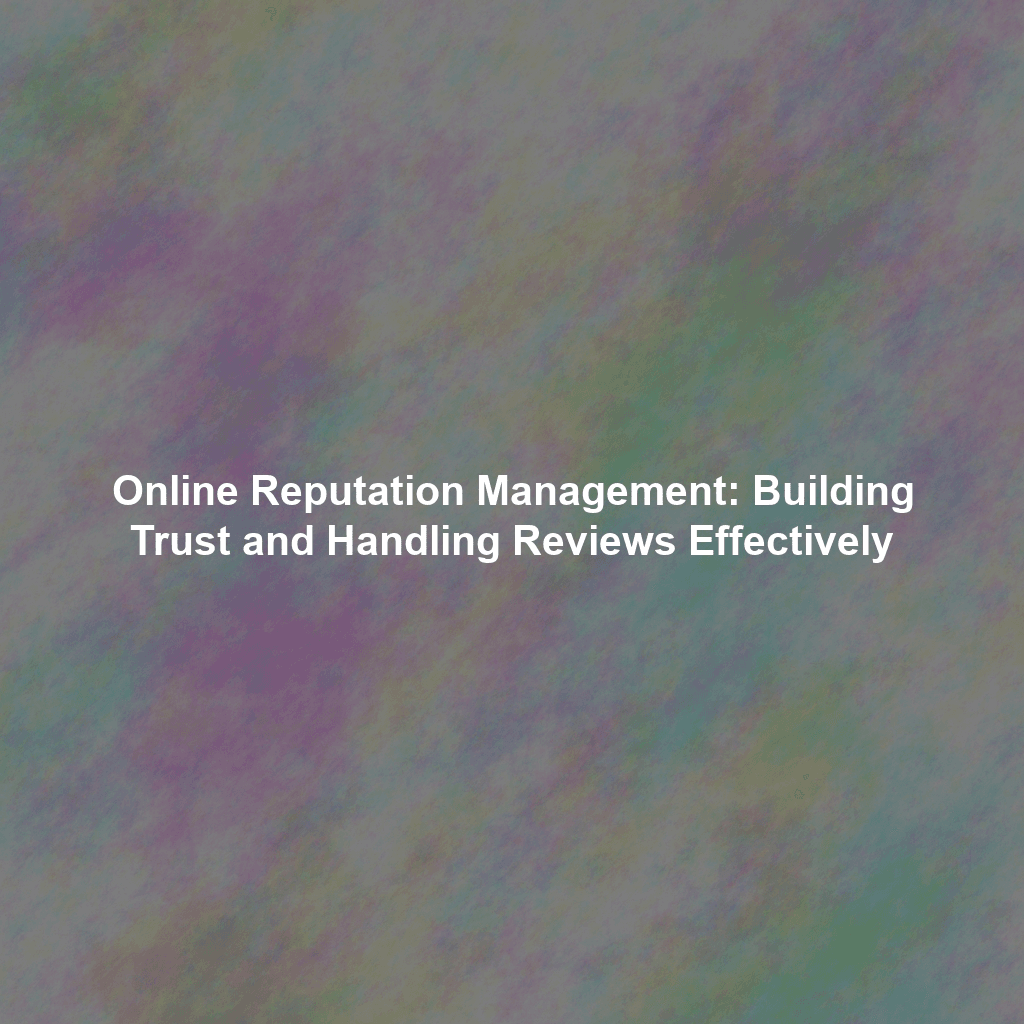Understanding the Power of Online Reviews
Online reviews are a powerful form of social proof. They provide potential customers with firsthand accounts of other people’s experiences, making them far more credible than traditional advertising. Positive reviews act as endorsements, reassuring potential customers that your business is trustworthy and delivers on its promises. Conversely, negative reviews can deter potential customers, raising doubts about your business’s quality and reliability.
Consider these points about the impact of online reviews:
- Influence Purchase Decisions: Studies consistently show that a significant percentage of consumers read online reviews before making a purchase decision. The higher your star rating and the more positive reviews you have, the more likely customers are to choose your business.
- Impact Local SEO Ranking: Search engines like Google consider online reviews as a ranking factor. Businesses with more positive reviews tend to rank higher in local search results, making them more visible to potential customers searching for relevant services in their area.
- Build Trust and Credibility: Positive reviews build trust and credibility, assuring potential customers that your business is reliable and committed to customer satisfaction.
- Provide Valuable Feedback: Reviews offer valuable insights into what your business is doing well and where it can improve. They can help you identify areas where you excel and areas where you need to make adjustments to better meet customer expectations.
Building a Positive Online Reputation: Proactive Strategies
Building a positive online reputation is an ongoing process that requires a proactive approach. It’s not enough to simply wait for reviews to roll in; you need to actively encourage satisfied customers to share their experiences and consistently monitor your online presence. Here are some key strategies:
1. Provide Exceptional Customer Service
The foundation of a good online reputation is, simply put, providing excellent customer service. Consistently exceed customer expectations, address their concerns promptly and professionally, and go the extra mile to ensure their satisfaction. A happy customer is far more likely to leave a positive review than a dissatisfied one.
Think of every interaction as an opportunity to leave a positive impression. Train your staff to be friendly, helpful, and knowledgeable. Empower them to resolve issues quickly and efficiently. Remember, every customer interaction contributes to your overall reputation.
2. Actively Encourage Reviews
Don’t be afraid to ask your satisfied customers to leave a review. Many customers are happy to share their positive experiences, but they may not think to do so unless prompted. Here are some effective ways to encourage reviews:
- Ask in Person: Train your staff to politely ask satisfied customers to leave a review after a positive interaction.
- Send Follow-Up Emails: After a purchase or service, send a follow-up email thanking the customer and including a direct link to your review profiles on platforms like Google, Yelp, and Facebook.
- Include Review Links on Your Website and Social Media: Make it easy for customers to find your review profiles by including links on your website, social media pages, and even in your email signature.
- Offer Incentives (with caution): While offering direct incentives for reviews can violate platform policies, you can offer general promotions or discounts to all customers, regardless of whether they leave a review. Transparency is key; avoid any appearance of bribing customers for positive feedback.
- Make the Process Easy: Provide clear and concise instructions on how to leave a review. The easier the process, the more likely customers are to participate.
3. Monitor Your Online Presence
Regularly monitor your online presence to see what people are saying about your business. This includes monitoring review sites, social media platforms, online forums, and news articles. Tools like Google Alerts and social media monitoring platforms can help you stay on top of mentions of your business online.
Monitoring your online presence allows you to:
- Identify and Address Negative Feedback: By monitoring your online presence, you can quickly identify and address negative feedback before it escalates.
- Engage with Customers: Monitoring allows you to engage with customers, both positive and negative, showing that you care about their opinions and are committed to providing excellent service.
- Track Your Reputation Over Time: Monitoring your online presence allows you to track your reputation over time and identify any trends or patterns that may require attention.
4. Claim and Optimize Your Business Listings
Ensure your business listings on platforms like Google My Business, Yelp, and Bing Places are accurate, complete, and optimized. Claiming your listing gives you control over the information displayed to potential customers, including your business name, address, phone number, website, hours of operation, and a detailed description of your products and services.
Optimize your listings by:
- Using Relevant Keywords: Include relevant keywords in your business description to improve your search ranking.
- Adding High-Quality Photos: Showcase your business with high-quality photos of your storefront, products, and team.
- Keeping Your Information Up-to-Date: Ensure your information is accurate and up-to-date, especially your hours of operation and contact information.
- Responding to Reviews: Respond to both positive and negative reviews promptly and professionally.
Handling Reviews Effectively: Turning Challenges into Opportunities
No matter how hard you try, you’re likely to receive negative reviews at some point. How you handle these reviews can significantly impact your online reputation. While positive reviews are great, negative reviews present an opportunity to demonstrate your commitment to customer satisfaction and improve your business.
Responding to Positive Reviews
Responding to positive reviews is just as important as responding to negative ones. It shows that you appreciate your customers’ feedback and are actively engaged with your online community. Keep your responses:
- Prompt: Respond to positive reviews as quickly as possible.
- Personalized: Avoid generic responses. Thank the customer for their specific feedback and mention something specific from their review.
- Enthusiastic: Show your appreciation and excitement.
- Invite Repeat Business: Encourage the customer to return and try other products or services.
Addressing Negative Reviews: A Step-by-Step Approach
Responding to negative reviews requires a delicate and strategic approach. Here’s a step-by-step guide:
- Acknowledge the Review: Acknowledge the review promptly and professionally. Let the customer know that you’ve read their feedback and are taking it seriously.
- Apologize Sincerely: Offer a sincere apology for the customer’s negative experience, even if you don’t believe your business was at fault. This demonstrates empathy and shows that you care about their satisfaction.
- Take Responsibility: If your business made a mistake, own up to it. Avoid making excuses or blaming others.
- Offer a Solution: Offer a solution to resolve the customer’s issue. This could include a refund, a discount on a future purchase, or a free service.
- Take the Conversation Offline: Encourage the customer to contact you directly to discuss the issue further. Provide your contact information and let them know that you’re committed to resolving the problem.
- Keep Your Response Professional: Even if the customer is being rude or unfair, maintain a professional tone in your response. Avoid getting into arguments or engaging in personal attacks.
- Learn From the Feedback: Use negative feedback as an opportunity to improve your business. Identify the root cause of the issue and take steps to prevent it from happening again in the future.
When to Flag a Review
Most review platforms have policies against fake, abusive, or irrelevant reviews. If you believe a review violates these policies, you can flag it for removal. However, keep in mind that platforms typically only remove reviews that clearly violate their guidelines. Disagreeing with a review is not grounds for removal.
Reputation Repair: Recovering from Negative Press
Sometimes, despite your best efforts, your online reputation may suffer a setback. This could be due to a series of negative reviews, a viral video of a negative customer experience, or a negative news article. When this happens, it’s important to take swift and decisive action to repair your reputation.
Strategies for Reputation Repair
- Acknowledge the Issue: Don’t try to ignore or deny the issue. Acknowledge it publicly and take responsibility for any mistakes that were made.
- Communicate Transparently: Be transparent with your customers and the public about what happened and what steps you’re taking to address the issue.
- Focus on Solutions: Focus on providing solutions and demonstrating your commitment to making things right.
- Encourage Positive Reviews: Ask your satisfied customers to share their positive experiences to help offset the negative feedback.
- Seek Professional Help: Consider hiring a reputation management professional to help you develop and implement a comprehensive reputation repair strategy.
Conclusion: Protecting Your Local Business’s Future
Online reputation management is an essential component of any successful local marketing strategy. By proactively building trust, effectively handling reviews, and taking steps to repair your reputation when necessary, you can create a positive online presence that attracts new customers and drives business growth. In today’s competitive local market, your online reputation is one of your most valuable assets. Invest in it wisely.
 Skip to content
Skip to content

